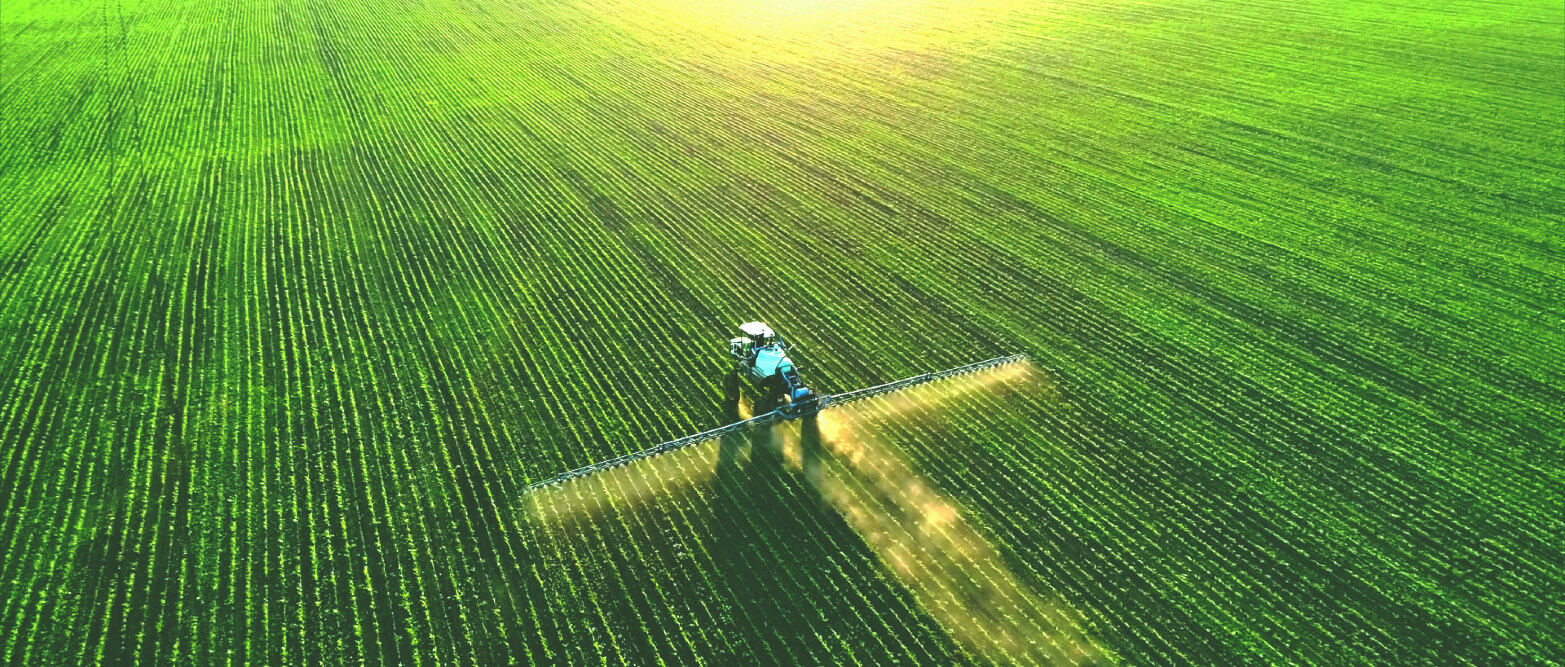Report on Southern California’s Water Conservation Achievements and Alignment with Sustainable Development Goals
Executive Summary: Advancing SDG 6 – Clean Water and Sanitation
A recent report from the Metropolitan Water District of Southern California highlights significant progress in sustainable water management, directly contributing to the United Nations’ Sustainable Development Goals (SDGs), particularly SDG 6 (Clean Water and Sanitation). The region has achieved a historic reduction in per capita water consumption, demonstrating a successful model for water-use efficiency and drought resilience in the face of climate change.
Key Achievement: Increased Water-Use Efficiency (SDG 6.4)
The primary accomplishment is a substantial increase in water-use efficiency, a core target of SDG 6.4, which aims to ensure sustainable withdrawals and supply of freshwater to address water scarcity.
- Potable water use per person has been reduced by 45% since 1990.
- The fiscal year 2023-24 saw a record-low consumption rate of 114 gallons per capita per day (GPCD).
- This marks a significant decrease from the 209 GPCD recorded in 1990.
Strategies for Integrated Water Resources Management (SDG 6.5)
The success is attributed to a multi-faceted approach consistent with SDG 6.5, which promotes the implementation of integrated water resources management. Key strategies include:
- Financial Investment: Over $750 million has been invested in projects that advance SDG 6.3 (improving water quality through recycling and reuse) and SDG 6.6 (protecting and restoring water-related ecosystems) through groundwater replenishment.
- Conservation Incentive Programs: Long-term water efficiency is promoted through public programs such as turf-replacement and rebates for smart irrigation systems.
- Public Awareness and Education: Sustained advertising and media campaigns have been utilized to inform residents about water supply challenges and the critical importance of conservation.
- Ecosystem Enhancement (SDG 15): A tree-planting incentive was introduced, offering a $100 rebate per tree to expand the urban tree canopy, contributing to SDG 15 (Life on Land) by fostering urban biodiversity.
Building Resilience to Climate Change (SDG 11 & SDG 13)
These water management efforts are a direct response to the challenges of climate change, enhancing the region’s resilience and contributing to SDG 11 (Sustainable Cities and Communities) and SDG 13 (Climate Action).
- The initiatives directly address the increased variability in precipitation and the heightened risk of drought associated with climate change.
- By increasing local water supply security, with a record 3.8 million acre-feet in reservoirs and groundwater banks, the region is building resilience against water-related disasters (SDG 11.5).
- These actions represent a critical adaptation strategy to the impacts of climate change, ensuring a more sustainable and secure urban environment.
Future Projects for Long-Term Water Security (SDG 6)
The Metropolitan Water District is committed to further strengthening regional water security through forward-looking infrastructure projects that align with SDG 6.
- Pure Water Southern California: A large-scale water recycling program designed to substantially increase the reuse of wastewater, directly supporting SDG 6.3.
- High Desert Water Bank: A future groundwater storage facility that will enhance the region’s capacity to store water during wet years for use during droughts, reinforcing long-term water security.
1. Which SDGs are addressed or connected to the issues highlighted in the article?
SDG 6: Clean Water and Sanitation
- The core of the article focuses on water conservation, efficiency, and management in Southern California. It details efforts to reduce water consumption, increase water recycling, and manage water resources like reservoirs and groundwater, which are central themes of SDG 6.
SDG 11: Sustainable Cities and Communities
- The article discusses urban water management within the “SoCal region.” It highlights policies and programs like turf replacement and tree planting incentives aimed at making communities more resilient and sustainable in the face of water scarcity, aligning with the goals of creating sustainable human settlements.
SDG 13: Climate Action
- The article explicitly links water conservation efforts to climate change. It states, “that variability is only going to become more extreme with climate change. By becoming more water efficient, we’re less stressed by the drought years.” This directly connects the actions taken to strengthening resilience and adaptive capacity to climate-related hazards like drought.
2. What specific targets under those SDGs can be identified based on the article’s content?
SDG 6: Clean Water and Sanitation
- Target 6.4: By 2030, substantially increase water-use efficiency across all sectors and ensure sustainable withdrawals and supply of freshwater to address water scarcity.
- The article’s main point is the reduction in per person potable water use from 209 GPCD in 1990 to 114 GPCD in 2023-24, which is a direct measure of increased water-use efficiency.
- Target 6.3: By 2030, improve water quality by…substantially increasing recycling and safe reuse globally.
- The article mentions a “$750 million” investment in “recycling and groundwater-replenishing projects” and specifically names the “Pure Water Southern California, a water recycling program.”
- Target 6.5: By 2030, implement integrated water resources management at all levels.
- The article describes a multi-faceted approach including conservation, education, infrastructure investment, and storage (“a record 3.8 million acre-feet of water in reservoirs and groundwater banks”), which represents an integrated management strategy.
SDG 11: Sustainable Cities and Communities
- Target 11.5: By 2030, significantly reduce…the number of people affected…by disasters, including water-related disasters.
- The conservation measures are presented as a way to make the region “less stressed by the drought years,” thereby reducing the impact of a recurring water-related disaster on the population.
- Target 11.b: By 2020, substantially increase the number of cities and human settlements adopting and implementing integrated policies and plans towards…resource efficiency, mitigation and adaptation to climate change, resilience to disasters.
- The article details several integrated policies and plans, such as the “turf-replacement program,” “rebates for smart irrigation systems,” and public awareness campaigns, all aimed at resource efficiency and resilience.
SDG 13: Climate Action
- Target 13.1: Strengthen resilience and adaptive capacity to climate-related hazards and natural disasters in all countries.
- The article directly addresses this by stating that water efficiency efforts are a response to the “more extreme” variability in rain and snow caused by “climate change,” thus strengthening the region’s resilience to droughts.
3. Are there any indicators mentioned or implied in the article that can be used to measure progress towards the identified targets?
Indicators for SDG 6
- Indicator 6.4.1 (Change in water-use efficiency over time): The article provides precise data for this indicator, stating that per capita water use was reduced from “209 GPCD in 1990” to a “record-low 114 gallons per capita per day during the 2023-24 fiscal year.”
- Indicator 6.4.2 (Level of water stress): Progress is implied by the increase in stored water, with the agency having “a record 3.8 million acre-feet of water in reservoirs and groundwater banks,” which reduces stress on immediate water resources.
- Investment in Water Recycling: The investment of “more than $750 million” in recycling projects serves as a financial indicator of progress towards Target 6.3.
Indicators for SDG 11
- Implementation of Policies: The existence of specific programs like the “turf-replacement program,” “rebates for smart irrigation systems,” and the “$100 rebate per tree planted” are qualitative indicators of the implementation of integrated policies for resource efficiency (Target 11.b).
- Public Awareness Campaigns: The mention of an “advertising and media campaign to increase awareness” is an indicator of efforts to engage the community in sustainable practices.
Indicators for SDG 13
- Increased Water Storage Capacity: The “record 3.8 million acre-feet of water in reservoirs and groundwater banks” is a quantitative indicator of increased adaptive capacity and resilience to climate-related droughts (Target 13.1).
- Development of Resilient Infrastructure: The planned “Pure Water Southern California” recycling program and the “future High Desert Water Bank” are indicators of strategic planning to strengthen resilience to climate change.
4. Create a table with three columns titled ‘SDGs, Targets and Indicators” to present the findings from analyzing the article. In this table, list the Sustainable Development Goals (SDGs), their corresponding targets, and the specific indicators identified in the article.
| SDGs | Targets | Indicators |
|---|---|---|
| SDG 6: Clean Water and Sanitation |
6.4: Increase water-use efficiency and address water scarcity.
6.3: Increase water recycling and reuse. 6.5: Implement integrated water resources management. |
– Reduction of per capita water use from 209 GPCD (1990) to 114 GPCD (2023-24). – Investment of over $750 million in recycling and groundwater projects. – Implementation of the “Pure Water Southern California” recycling program. – Management of 3.8 million acre-feet of water in reservoirs and groundwater banks. |
| SDG 11: Sustainable Cities and Communities |
11.5: Reduce the impact of water-related disasters (droughts).
11.b: Implement integrated policies for resource efficiency and resilience. |
– Conservation practices to make the region “less stressed by the drought years.” – Implementation of policies like the “turf-replacement program,” rebates for smart irrigation, and tree-planting incentives. – Launch of an “advertising and media campaign” for public awareness. |
| SDG 13: Climate Action | 13.1: Strengthen resilience and adaptive capacity to climate-related hazards. |
– Water efficiency measures explicitly framed as a response to climate change-induced variability in rain and snow. – Increased water storage capacity (3.8 million acre-feet) to buffer against droughts. – Development of future projects like the “High Desert Water Bank” for long-term resilience. |
Source: spectrumnews1.com






